The Risk Register (Risks) page allows user to add risks to the selected project. Here the risk data can be imported from PRC Risk Register or create in the page itself. The user can also input the probability percentage for each risk which is the chance of occurrence for each risk and the distribution values according to which the duration can be distributed over the risk.
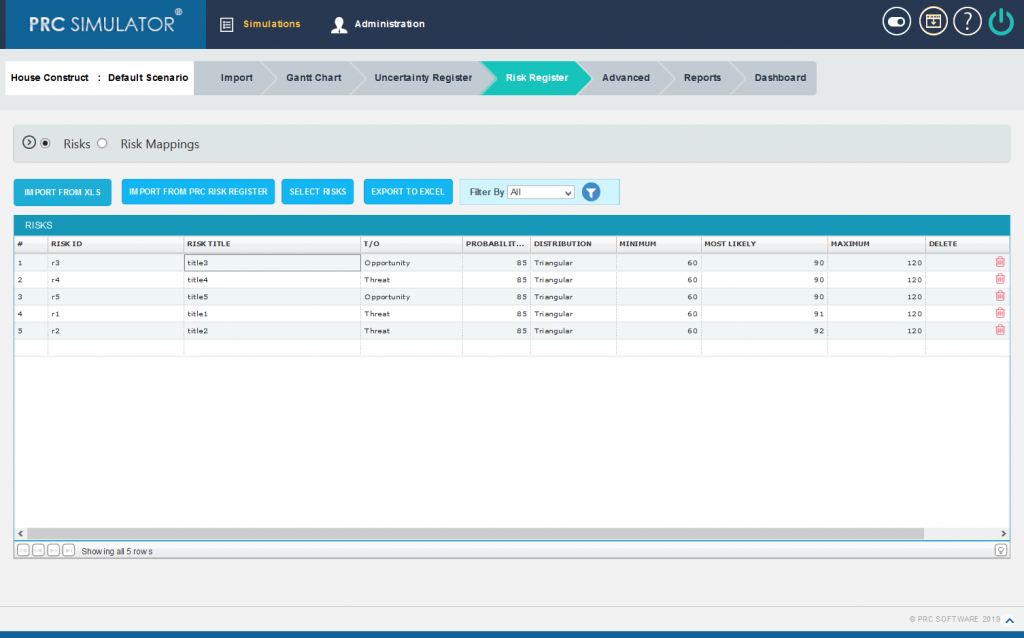
Figure 1
2.5.1 Add Risk:
This functionality is used to add a new risk to the project.
Steps:
- Simulations –>Risk Register –> Risks
- Click on Risk Id column to add new risk. (Figure 1)
- Give the name, type of the risk, title, probability and distribution values.
The distribution values include Normal, Beta, Triangular, Trigen, Uniform and Discrete. When a new risk is added the distribution value which is automatically selected will be Triangular.
2.5.2 Edit Risk:
This functionality is used to edit the existing risk details.
Steps:
- Simulations –>Risk Register –> Risks
- Click on the risk which has to be modified. (Figure 1)
- Modify the name, type, title and probability of the risk.
2.5.3 Import from XLS
This functionality is used for importing risks from an .XLS file.
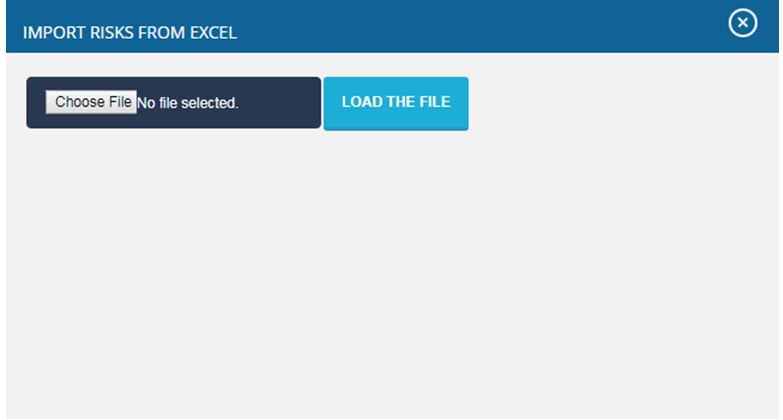
Figure 2
Steps:
- Simulations –>Risk Register –> Risks
- Click on the IMPORT FROM XLS (Figure 1)
- A pop up appears, browse the file to be imported and upload. (Figure 2)
Map the corresponding values in the excel file and click on the IMPORT VALUES button. (Figure 3)

Figure 3
2.5.4 Filter Data:
This functionality is used to filter the data according to a particular field and its selected values for risk / task.
Steps:
- Simulations –>Risk Register –> Risks
- Select the required column from the Filter by dropdown. (Figure 1)
- Enter the value in the textbox provided or select a value from the drop down based on which filtering is to be done. (Figure 4) While giving conditions with `select multiple´ option to filter, a pop up appears (Figure 5) where the multiple risks can be selected.
- Click the filter icon (Figure 4). The filtered data will be displayed.

Figure 4

Figure 5
2.5.5 Select Risks
This functionality is used to select multiple risks.
Steps:
- Simulations –>Risk Register –> Risks
- Click on the SELECT RISKS button. (Figure 1)
- Check boxes appear on the first column of each risk which can be ticked for selecting corresponding risks. (Figure 6)
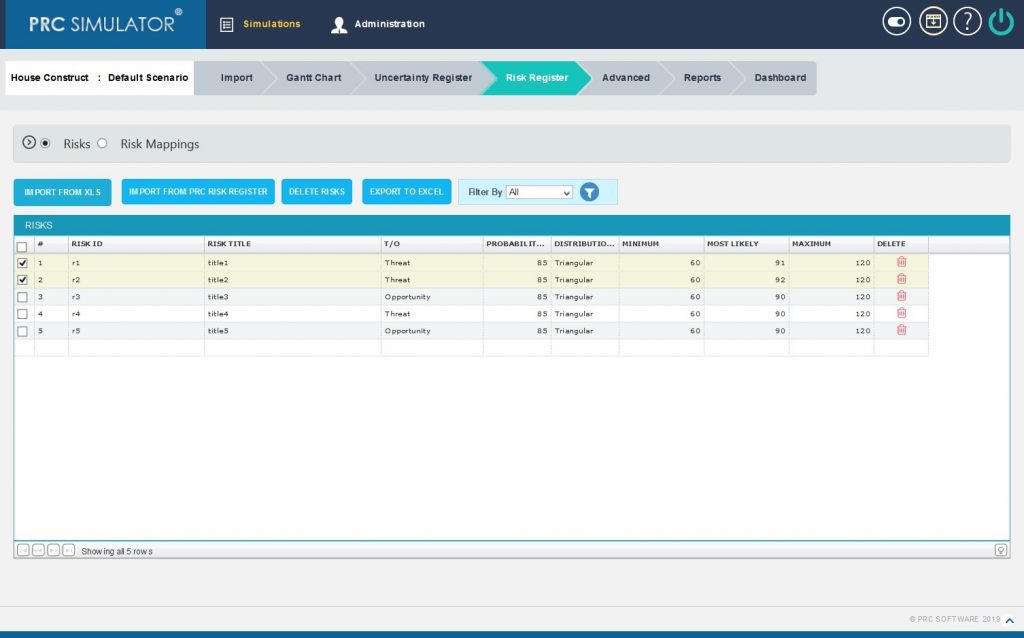
Figure 6
2.5.6 Delete Multiple
This functionality is used to delete multiple risks from the project.
Steps:
- Simulations –>Risk Register –> Risks
- Click on the SELECT RISKS button. (Figure 1)
- Tick the checkboxes of the corresponding risks which are to be deleted. (Figure 6)
- Click on the DELETE RISKS button. (Figure 6)
- A pop up appears. Click OK to delete or click Cancel. (Figure 7)

Figure 7
2.5.7 Export to Excel
This functionality is used for exporting risks to an Excel file. (Figure 8)
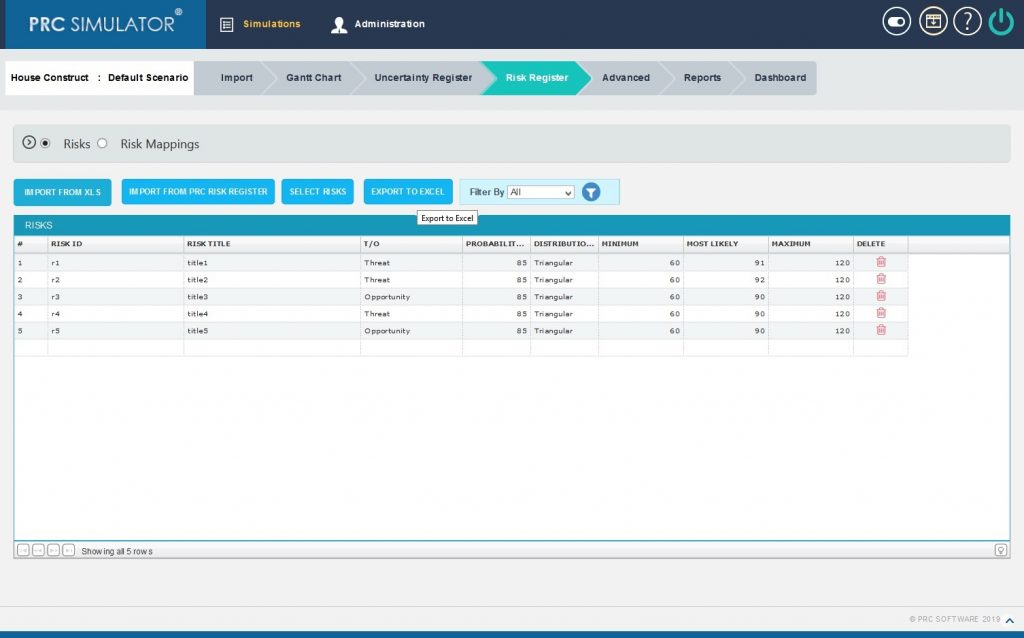
Figure 8
2.5.8 Import from PRC Risk Register
This functionality is used for importing risks from a PRC Risk Register of the same project.
Steps:
- Simulations –>Risk Register –> Risks
- Click on the IMPORT FROM PRC RISK REGISTER (Figure 1)
- RISK DATA IMPORT FROM PRC ENTERPRISE RISK REGISTER pop up appears. Add the risk fields to Selected Node whose values need to be imported from PRC Risk Register using ADD or ADD ALL button as necessary.
Remove the risk fields to Hidden Node whose values need not be imported from PRC Risk Register using REMOVE or REMOVE ALL button as necessary. (Figure 9)
- Click the UPDATE FIELDS button to update the risks fields (Figure 10)
- Select the risks and click on the IMPORT RISK DATA button to import. (Figure 10)
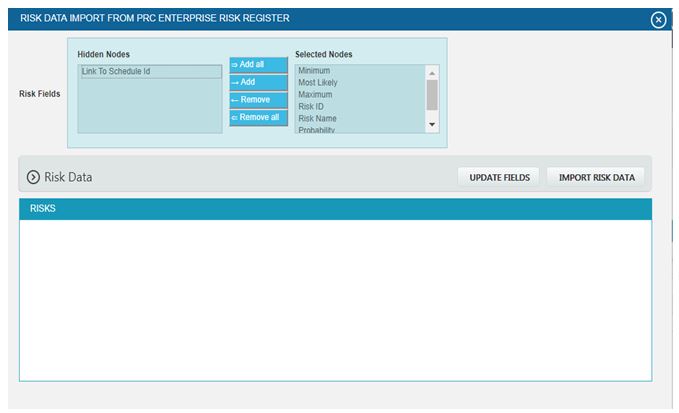
Figure 9

Figure 10



